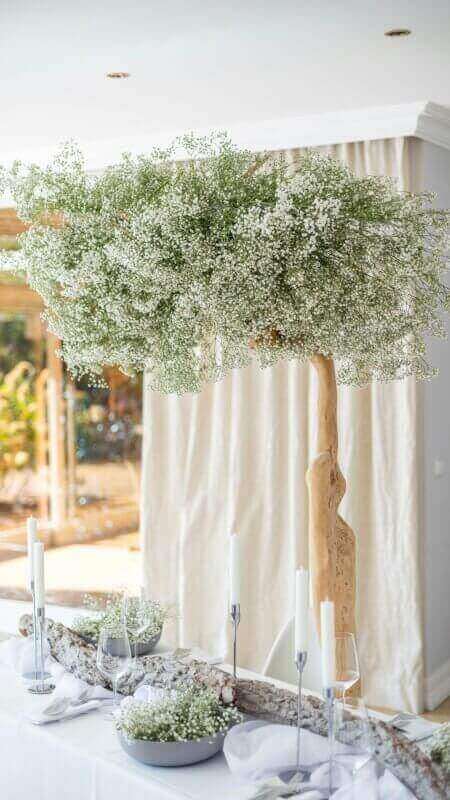Are you a flower enthusiast looking to add some vibrant blooms to your garden but unsure of the different types? Look no further! In this article, we will explore the dissimilarity between annual and perennial flowers. Whether you prefer the constant change of annuals or the enduring beauty of perennials, understanding their differences will help you make informed decisions for your garden. So, let’s begin our journey into the world of flowers and uncover the distinctions between annual and perennial varieties.
Annual Flowers
Definition
Annual flowers are a type of plant that completes its life cycle in just one year. This means that they germinate from seeds, grow, bloom, produce seeds, and then die, all within a year. Unlike perennial flowers, which can live for multiple years, annual flowers need to be replanted each year.
Lifecycle
The lifecycle of annual flowers is relatively short. It begins with the germination of seeds, typically in the spring or early summer. As the plants grow, they develop leaves, stems, and eventually flowers. Once the flowers have bloomed and pollination has occurred, the plants begin to produce seeds. As the summer comes to an end and the weather cools down, annual flowers start to wither and die, dispersing their seeds to ensure the next generation of plants.
Benefits
Annual flowers offer several benefits to gardeners and landscapers. One of the main advantages is that they provide vibrant bursts of color and visual interest to any garden or landscape. With a wide variety of annual flowers available, you can easily customize your space and create stunning displays. Additionally, since annuals complete their lifecycle within a year, they allow for flexibility in changing the appearance and design of your garden from one year to the next.
Annual flowers are also popular for their ability to grow quickly and bloom abundantly. This makes them a great choice for gardeners who want immediate visual impact and are looking to create a beautiful garden in a short period of time. They are also excellent for filling in gaps in borders or beds, adding a splash of color where needed.
Examples
Some commonly known examples of annual flowers include marigolds, petunias, zinnias, begonias, and sunflowers. Marigolds are beloved for their bright yellow or orange flowers and are known to repel pests like mosquitoes. Petunias come in a variety of colors and are often used in hanging baskets or as border plants. Zinnias produce colorful, daisy-like flowers and are great for attracting pollinators. Begonias are known for their beautiful foliage and showy flowers, making them a popular choice for container gardening. Sunflowers, with their tall stalks and large sunny blooms, are a favorite for their visual impact and being a magnet for bees and birds.

Perennial Flowers
Definition
Perennial flowers are plants that live for multiple years, typically at least three years or more. Unlike annuals, which complete their lifecycle in one year, perennials continue to grow and bloom for several years once they are established.
Lifecycle
Perennial flowers have a longer lifecycle compared to annuals. They have the ability to live through multiple growing seasons and do not need to be replanted each year. Perennials typically stay dormant during the winter months, and as the weather warms, they start producing new growth. They continue to bloom year after year, although the frequency and duration of their blooming period may vary depending on the specific perennial species.
Benefits
Perennial flowers offer several benefits to gardeners and landscapers. One of the key advantages is their longevity, as they can grace your garden for many years, providing a consistent and reliable source of beauty. Once established, perennials require less maintenance than annuals, as they do not need to be replanted each year. They have well-developed root systems that help them survive through various weather conditions, including droughts and cold winters.
Another benefit of perennial flowers is their ability to attract and support pollinators such as butterflies and bees. By providing a stable food source and habitat, perennials contribute to the health and conservation of these important pollinating species.
Examples
Some examples of perennial flowers include roses, daisies, peonies, hydrangeas, and lavender. Roses are prized for their beauty and fragrance and have been beloved for centuries. Daisies are cheerful flowers that come in various colors and are known for their simplicity. Peonies are highly sought-after for their large, lush blooms and delightful fragrances. Hydrangeas are known for their clusters of flowers and their ability to change color based on soil pH. Lavender is a versatile perennial with aromatic flowers that are commonly used for their calming and fragrant properties.

Differences between Annual and Perennial Flowers
Lifecycle
One of the primary differences between annual and perennial flowers is their lifecycle. Annuals complete their entire life cycle in one year, from germination to seed production, whereas perennials have a longer lifespan and can live for multiple years. This distinction affects the overall maintenance and planting requirements for each type of flower.
Blooming Period
The blooming period of annual flowers tends to be more concentrated and shorter compared to perennials. Annuals typically bloom profusely for a few weeks to a few months, providing a burst of color and beauty during that time. Perennials, on the other hand, may have a shorter blooming period but often have the ability to bloom at different times throughout the growing season. This allows for a more extended display of flowers and ensures there is always something in bloom in the garden.
Longevity
Annual flowers are short-lived, with a lifespan of just one year. Once they have completed their flowering and seed production, they will die off. Perennials, on the other hand, can live for multiple years, some even for decades. This longevity allows for the establishment of mature plants that continue to contribute to your garden’s beauty year after year.
Effort and Maintenance
Annual flowers require more effort and maintenance compared to perennials. Since annuals need to be replanted every year, they require ongoing care and attention, including soil preparation, planting, watering, and fertilizing. Perennials, once established, require less maintenance as they continue to grow and bloom. However, periodic pruning, deadheading, and dividing may be necessary to encourage their health and longevity.
Variety
Annual flowers offer a greater variety in terms of colors, shapes, and sizes compared to perennials. Each year, new varieties of annuals are introduced to the market, providing gardeners with endless options for creating unique and diverse displays. Perennials also offer a wide range of choices, but their range may be more limited compared to annuals.
Cost
The cost of annual flowers can vary depending on the specific variety and the number of plants needed for your garden. Since annuals need to be replanted each year, the cost can add up over time. Perennial flowers may have a higher initial cost due to the longevity and establishment period, but they do not require frequent replanting. Overall, the cost of annuals versus perennials will depend on your gardening goals and budget.
Uses
Annual flowers are often used for seasonal displays, container gardens, bedding plants, and filling in gaps in landscaping. They are a popular choice for creating vibrant flower beds and adding temporary pops of color to outdoor spaces. Perennials, on the other hand, are commonly used for creating permanent landscape features such as borders, foundation plantings, and perennial gardens. They provide structure and continuity to a garden design.
Pest and Disease Resistance
Perennial flowers, due to their well-established root systems and longer lifespans, often exhibit better resistance to pests and diseases compared to annual flowers. However, this may vary depending on the specific plant species and the local environment. Annual flowers may require more attention to pest and disease management, including regular monitoring and appropriate treatments.
Ecosystem Impact
The impact of annual and perennial flowers on the ecosystem differs slightly. Annual flowers, with their vibrant blooms and ability to attract pollinators, contribute to the overall biodiversity and health of the ecosystem. They provide food and habitat for various insects and animals, supporting the delicate balance of nature. Perennial flowers, with their long-term presence and stability, also play an essential role in the ecosystem by providing consistent resources for pollinators and other beneficial organisms.
Popularity
Both annual and perennial flowers have their own unique appeal and are popular choices among gardeners and landscapers. Annual flowers are often favored for their immediate impact and the ability to change up the garden’s appearance each year. Perennials, on the other hand, are treasured for their longevity and the reliability of their blooms year after year. The popularity of each type of flower may vary depending on personal preferences, gardening styles, and regional factors.

Conclusion
In summary, annual and perennial flowers have distinct differences in terms of their lifecycle, blooming period, longevity, maintenance requirements, variety, cost, uses, pest and disease resistance, ecosystem impact, and popularity. Both types of flowers offer unique advantages and contribute to the beauty and biodiversity of gardens and landscapes. Whether you prefer the temporary bursts of color provided by annuals or the long-lasting beauty of perennials, incorporating a combination of both can create a captivating and vibrant outdoor space. So get out there and start planning your garden, and remember, whether you choose annuals or perennials, the result will be a stunning display of nature’s beauty.

